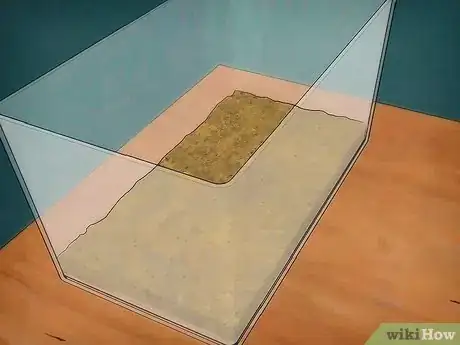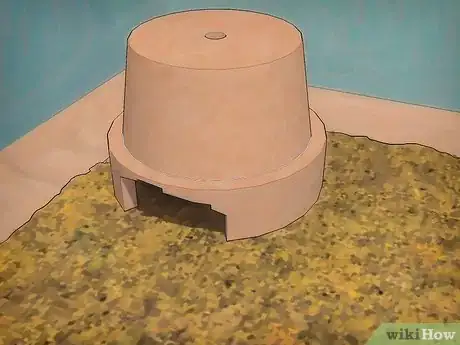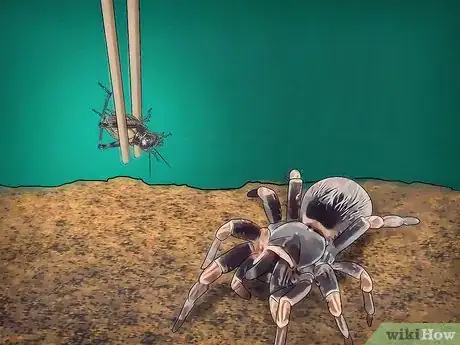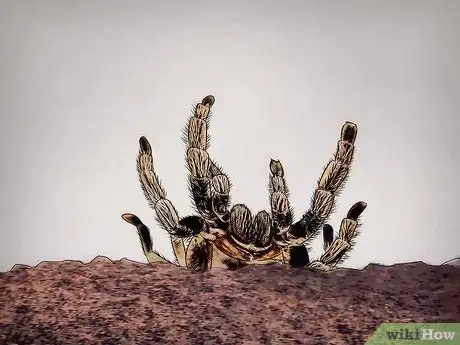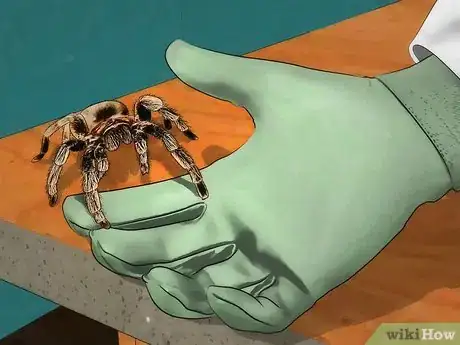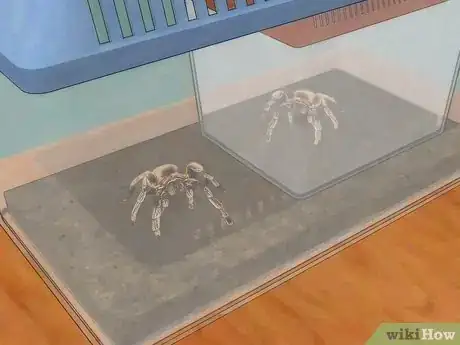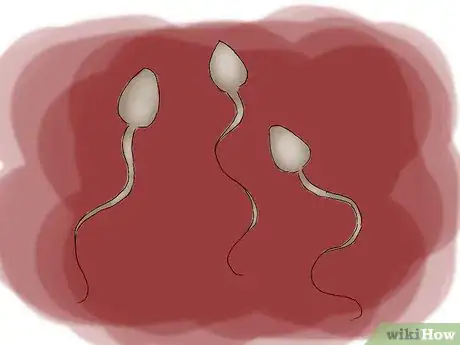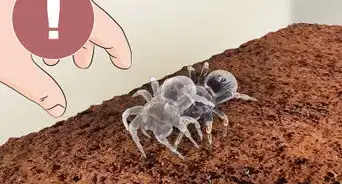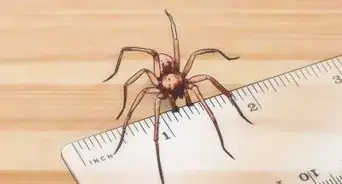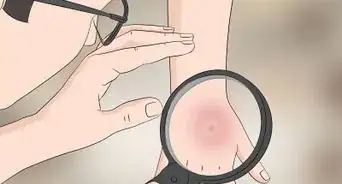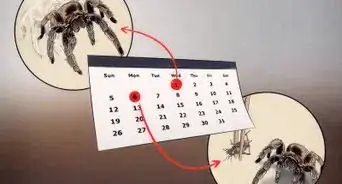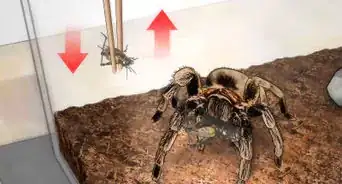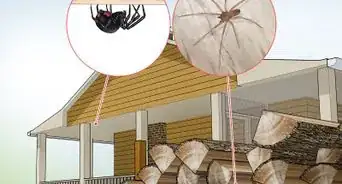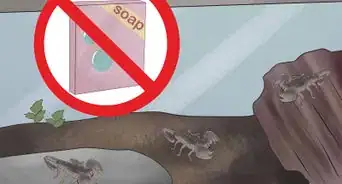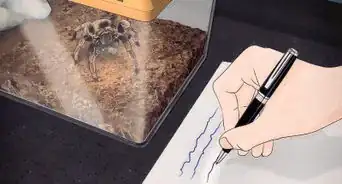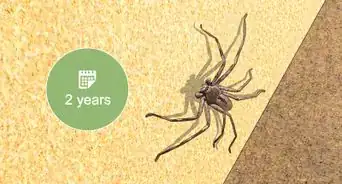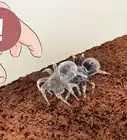X
wikiHow is a “wiki,” similar to Wikipedia, which means that many of our articles are co-written by multiple authors. To create this article, volunteer authors worked to edit and improve it over time.
This article has been viewed 21,113 times.
Learn more...
Mexican Red Knee Tarantulas (Brachypelma smithi) are some of the best-known pet Tarantulas. With beautiful red knees, they are very easy to identify. They are loved in the pet trade because of their long lifespan, beauty, and temperament.
Steps
Part 1
Part 1 of 3:
Providing Housing and Care
-
1Get the right sized tank. A tank that is between 5 and 10 gallons should be suitable for your tarantula. The width of the tank should be 3 times the width of your spider's diagonal leg span (DLS).
-
2Put in some substrate. The substrate should be either soil, peat moss, or vermiculite. There should be at least 2 to 3 inches of substrate.
- Putting in this much substrate gives your Tarantula plenty of room to burrow and it helps cushion any falls.
Advertisement -
3Add a hide to your tank. A hide will be used to give your Tarantula some privacy if it feels exposed in the open. Some commonly used hides are:
- A small flower pot
- Wood
- Cork bark
-
4Keep a constant temperature range. The recommended temperature range is between 75 and 80 degrees Fahrenheit (25 and 30 degrees Celcius). To tell the temperature, you will need a tank thermometer. To achieve this temperature range, you might want to use a
- Under tank heater
- Heat lamp
- Heating cable
-
5Keep a proper humidity level. The recommended humidity level is between 50 and 60%. You will need to use a hygrometer to keep track of the humidity inside the tank. To increase your humidity level, you can spay the tank.
- You should also add a shallow bowl of water to the tank to help with humidity
- If your Tarantula is always in the corner of the tank, it is probably too humid.
Advertisement
Part 2
Part 2 of 3:
Feeding, Molting, and Handling
-
1Feed 2 to 4 properly sized crickets every 4 to 7 days for younger spiders, and every 7 to 10 days for adults. You should give your tarantula live food in the form of either Crickets, Locusts or mealworms. You can also give your spider an occasional pinky mouse. Wingless fruit flies can be a good option for feeding young spiderlings.
- A tarantula can eat food up to the size of itself.
-
2Don't disturb your tarantula when it's molting. To grow, Tarantulas grow new sets of skin under their exoskeleton. When they begin to break out of their exoskeleton, this is called molting. When your spider is molting, it will look very lazy.
- Don't feed your tarantula until at least a week after it has finished molting.
- During a molt, a tarantula may lay up-side-down on it's back or on its side to get out of the old skin easier.
- If your tarantula is on her stomach and has curled her legs tightly inwards, then it may be dead or dying.
-
3Be very careful while handling. Handling any spider isn't with risks. To handle a tarantula, use a soft item to push your spider to you. Then, put your hand palm up so the spider's head is facing you. After, use the paint brush to gradually put the spider in the direction of your hand.[1]
- If you are nervous or scared of handling your spider, it is likely that either you or your spider will end up hurt
- If the spider shows any threatening signs, don't handle it
- Keep any movements slow and don't breathe directly on the spider.
Advertisement
Part 3
Part 3 of 3:
Breeding
-
1Sex your spiders. Sexing is a very easy process if you have some of your spider's shed skin. If you have the skin, look inside the abdomen where it meets the carapace. If it is a female, you will see something called the spermatheca. If it is a male you won't.
-
2Put your female in a bigger tank. You will be putting the male in with the female so, put the female in a bigger tank to give the spiders more room.
-
3Introduce your spiders. When the male makes a sperm web, it's time to introduce him to the female. He should be placed into the female's tank.
-
4After the sperm is injected, remove the male. After the male disengages, he walks away from the female. At this time, you should remove him from the female's tank.
- If the mating was successful, you should see the female produce an egg sack a week after mating.
- Normally, the male will die in around a week after mating.
- If the mating was successful, you should see the female produce an egg sack a week after mating.
Advertisement
Warnings
- Don't feed them wild caught food to prevent pesticides.⧼thumbs_response⧽
- If you are bitten by your spider, go to the hospital. You won't die but it is extremely uncomfortable.⧼thumbs_response⧽
- Don't breed your spiders when one is molting.⧼thumbs_response⧽
- They are normally docile but, if disturbed they may kick urticating hairs from their abdomens and their back legs. These hairs may cause an allergic skin reaction which can result in inflammation, rash, and itching that lasts for up to a few days.⧼thumbs_response⧽
Advertisement
References
About This Article
Advertisement

